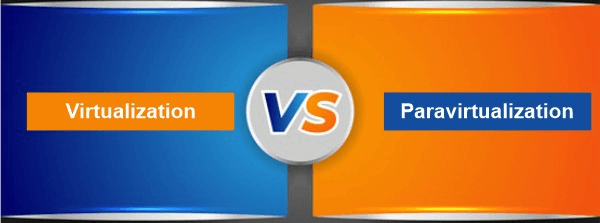Difference between Full Virtualization and Paravirtualization in Operating SystemVirtualization allows one computer system to perform the functions of numerous computers by sharing the resources of single hardware across multiple environments. CPU virtualization includes both full virtualization and paravirtualization. The key difference between them is that in full virtualization, the unmodified OS is unaware of the virtualization and employs binary translation to trap operating system calls at run-time. In contrast, paravirtualization uses hypercalls in place of non-virtualizable operating system instructions, and the complete process occurs during the compile time, where these instructions are managed. In this article, you will learn about the difference between Full Virtualization and Paravirtualization in the operating system. But before discussing the differences, you must know about Full Virtualization and Paravirtualization in the operating system. What is Full Virtualization?Full virtualization is the first generation of software solutions for server virtualization. It was developed by IBM in 1966. It operates by combining binary translation and direct compilation, where the guest operating system is completely separated from the basic hardware and virtualization layer. As a result, whatever the virtual machines produce, the underlining hardware is rewritten by a dynamic translator. It involves a lack of expertise in virtualization on the guest OS end, and change is inevitable. ESXi, VMWare, and Microsoft virtual servers are the technologies that provide full virtualization capabilities. When an OS instruction is created, the hypervisor immediately translates it during run-time and stores the result for future reference. At the same time, the user-level instructions are run without changes at native speed. Although the primary goal of storing the translated instructions during binary translation is to improve performance, it may raise the cost of memory usage. Binary translation is another drawback of full virtualization because it consumes a lot of time and may get a huge performance overhead. I/O intensive apps are complicated to use in full virtualization. What is Paravirtualization?The interaction of the guest operating system with the hypervisor to improve performance and productivity is known as paravirtualization. Unlike full virtualization, paravirtualization does not achieve full isolation; instead, the approach implements partial isolation. It also alters the operating system kernel to use hypercalls rather than non-virtualizable instructions. The goal of hypercalls is to communicate with the virtualization layer hypervisor directly. The hypervisor performs different functions in paravirtualization, such as the layout of the hypercalls interface for other critical kernel services like memory management, timekeeping, and interrupt handling. The main benefit of paravirtualization is that it may significantly minimize virtualization overhead. However, most userspace workloads gain relatively little and achieve near-native performance that is not reached for all workloads. Moreover, it is little compatible and portable because it doesn't support the unmodified operating system. It may also cause specific critical support and maintainability issues in the production environment due to the requirement for extensive OS kernel modifications. Key differences between Full Virtualization and Paravirtualization in Operating System
Here, you will learn about the various key differences between Full Virtualization and Paravirtualization multitasking in operating systems. Some main differences between Full Virtualization and Paravirtualization multitasking in operating systems are as follows:
Head-to-head comparison between the Full Virtualization and paravirtualization in Operating SystemThe operating system has various head-to-head comparisons between Full Virtualization and paravirtualization in the Operating Systems. Some comparisons between Full Virtualization and paravirtualization in Operating Systems are as follows:
ConclusionIn summary, there are two types of virtualization methods: full and paravirtualization. Full virtualization differs from paravirtualization in that the unmodified operating system operates completely isolated. On the other hand, paravirtualization does not fully isolate the OS but rather alters it to make it compatible with specific APIs. |
 For Videos Join Our Youtube Channel: Join Now
For Videos Join Our Youtube Channel: Join Now
Feedback
- Send your Feedback to [email protected]
Help Others, Please Share










